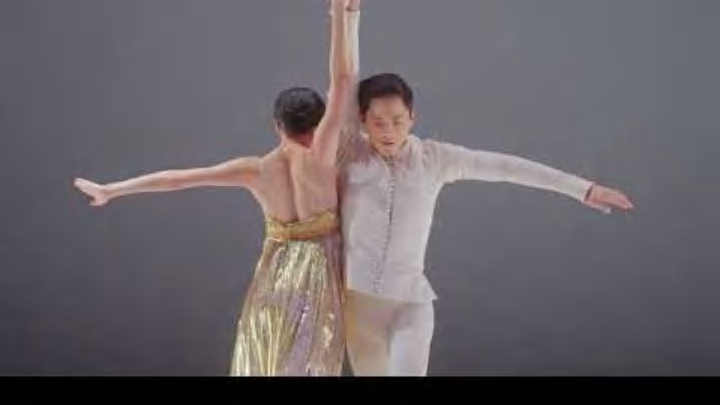With minimalist staging, dancers sometimes in barefoot, modern choreography, and striking lighting, Jean-Christophe Maillot's Roméo et Juliette, performed by the Boston Ballet, sets itself apart from other classical interpretations. Although I prefer Kenneth MacMillan’s (still the gold standard, in my opinion) and John Cranko’s more traditional versions, there is so much to recommend about this captivating production, with incredible performances by the Boston Ballet that make Maillot's interpretation shine.
In the opening night performance I saw, principal dancer Ji Young Chae brought out Juliet’s youthfulness in a way that felt dynamically authentic, but she also conveyed an ethereal poetry in her movements. She transitioned seamlessly from the exuberant innocence of girlish first love to the urgency of a woman dealing with impending doom, all the while infused with a tragic depth of character. She also managed the intricate choreography—including several challenging passages while barefoot—with aplomb.
Matching her was Jeffrey Cirio’s Romeo, whose rich portrait proved powerfully poignant. He and Chae have such compelling chemistry and have developed a seamless partnership that stands among the best in ballet right now. Any chance to see these two perform together is a true gift. Cirio also stood out with his earnest friendship moments with Mercutio (Sun Woo Lee) and Benvolio (Daniel R. Durrett), both excellent here. But it was during the final crypt scene where Cirio really broke my heart, in his final death movements, performed with such emotive pathos.
My other favorite moment occurred during Lady Capulet’s impassioned solo after Tybalt’s (Yue Shi) death at the hands of Romeo. In the role, Chrystyn Mariah Fentroy brought down the house at the end of Act II with that visceral solo. There was a fair share of hoots and hollers when the curtain came down. It helped that the solo is set to the most dramatic (and gripping piece of music in the ballet), but trust me, Fentroy gave it everything and made the seat in the opera house feel her primeval anguish.
The stellar performances really carried the production and make it a must-see based on them alone.
The production itself is an interesting one, with Maillot taking a dramatic risk to set a three-act full-length story to modern choreography. Much of the movement choices serve the plot well, such as the pas de deux’s that really are the bread and butter of Romeo and Juliet, with beautiful fluid movements that emphasize the intense stakes at hand. However, I’m also not 100 percent convinced that a modern approach really works, with music that includes so many mandolin and Renaissance influences that it’s difficult not to want to see the dancers in traditional costumes, with some of the Renaissance dances and transition elements included. I also missed the few odd ends cut out, such as the extended Mercutio death passage.
What a beautiful & gut-wrenching performance by Jo Young Cha & Jeffrey Cirio (they’re such an amazing partnership) in Jean-Christophe Maillot’s modern Romeo et Juliette. Brava also to Chrystyn Mariah Fentroy’s Lady Capulet, who delivered that visceral solo at the end of Act II… pic.twitter.com/Bai0h9t4Iz
— Veronica E Bruno (@VBrunoStories) May 31, 2025
That being said, I did appreciate the vision that Maillot deployed here. There were moments of incredible pathos, with the minimalist set design by Ernest Pignon-Ernest—with its sliding white panels and simple geometric forms— beguilingly complementing the tragic elements of the story. The beautifully conceived titles set in calligraphy on a scrim at the start were a particularly elegant touch. The patterns of light shifted the atmospheric elements of the drama effectively, thanks to Lighting Designer Dominique Drillot. I also liked the charming puppet show in the middle that foreshadowed the tragic end. Jerome Kaplan’s color scheme and minimalist costumes seamlessly blended in with the set design.
What sets this production apart is also the integration of Friar Laurence, danced with heartrending intensity by Paul Craig at the performance I saw. I wasn’t sure if I would feel this was an intrusion or serve the story well, and I have to say that I decided to accept it from the start as he progressed the drama along, underscoring the tragedy in a reflective way, unable to stop it despite his ardent attempts to try.
Sometimes it works, like when he was trying to push one of the panels away to stop the future circumstances, a moment I found profoundly moving. And at other times, I was on the fence: I’m still not sure he was necessary in the tragic end to underscore the tragedy of what just transpired (however, it would have been inconsistent to not have him here since he effectively served as the de facto narrator in this case). I thoroughly enjoyed Maillot’s dance movements he set for him, which matched the leitmotif of Prokofiev’s, so I completely understand why the choreographer was inspired to illustrate this in the first place.
Intriguingly, this version eschewed traditional swordplay and weapons in favor of purely danced expressions of the violence. In one sequence, Romeo’s pursuit of Tybalt was conveyed through the lens of a slow-motion group scene that I questioned at first, but then got right on board when it crescendoed into a sudden violent outburst, culminating in Romeo strangling Tybalt. The strangling went on for too long for my taste, but the transition from slow-paced to lightning-quick violence was an evocative choice that made it worthwhile.
And the kiss from Romeo as he lifts Juliet by his lips (with butterfly arms) is one of the most stunning images I’ve seen in dance. That, and Cirio’s heartbreaking death while reaching out to Chae’s Juliet, happily live rent-free in my head.
The entire cast was first-rate at the performance that I saw, including Courtney Nitting as the Nurse. Boston Ballet’s Romeo et Juliette runs through Sunday, June 8, at the Citizens Opera House.
